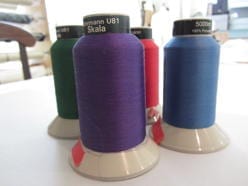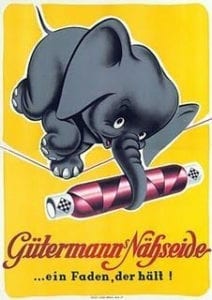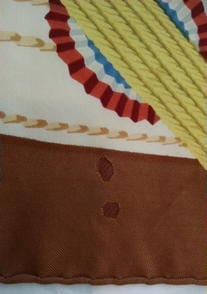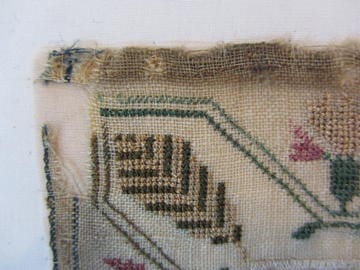By Lauren Klamm
 From the warp and weft deftly woven to create textiles, to the twisted fibers holding together our clothes, thread is constantly keeping us together. In conservation, thread is carefully chosen to fit the unique challenges and specific goals of every project. We greatly depend on threads to achieve the most durable, protected and beautiful product.
From the warp and weft deftly woven to create textiles, to the twisted fibers holding together our clothes, thread is constantly keeping us together. In conservation, thread is carefully chosen to fit the unique challenges and specific goals of every project. We greatly depend on threads to achieve the most durable, protected and beautiful product.
The conservationist’s motto has most often been “Like with Like”, matching the thread fiber content with the fiber content of the textile. A conservator’s tool kit includes a large assortment of silks, cottons, wools and even human hair.
Since we most often work with older textiles that were woven with natural fibers such silk or cotton, where do synthetic fibers fit?

Vintage Gutermann advertisment
With the development of synthetic fibers, threads have become fine as silk but incredibly strong and resistant to abrasion. In 1955, Gutermann produced a nylon thread that proved itself to be super strong and highly resistant to abrasion.
One thread we often use is, Skala, originally called Hempshire and made by the Gutermann company. It was developed for blind-hemming and garment stitching. A continuous filament as opposed to twisted yarns, this 100% polyester thread is virtually invisible and reduces any unsightly puckering and picking. While It is sold by many industrial thread suppliers such as Bergen tailors and Oshman brothers, it was brought to the attention on conservationists by Tom Klass and the team at Testfabrics.
In our conservation work, this fine thread mimics the fineness of silk and blends seamlessly into textiles. It’s semi-translucent nature allows it to meld into the textile without having to match the exact color.

A Patch support couched with Skala. The synthetic seamlessly blends in to a pure silk Hermes scarf.

Skala used to mount linen sampler. Delicate and strong, the skala will ensure the sampler stays in place.
While we often use natural fibers and threads, new technology is expanding the future of conservation.
A special thank you to Tom Klass and the wonderful team at Guterman thread company.

Hi Julia,
I need to patch an elbow and wonder if this Skala thread would work. If we add an identical fabric under the hole applied with lots of tiny stitches it might look pretty good?
Also do you know a good source for Skala which sounds great for so many needs.
Susan McCauley